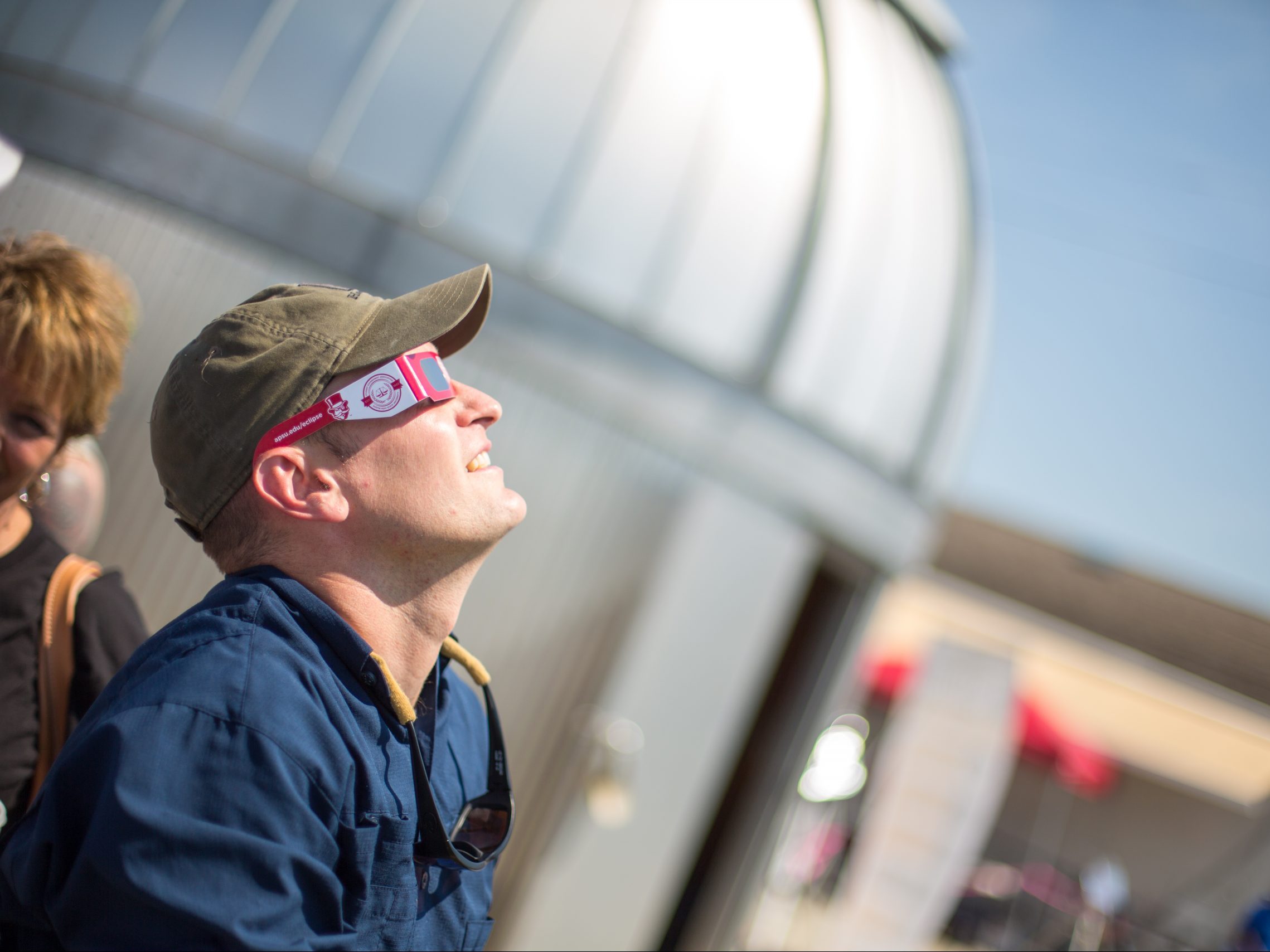Austin Peay State University hosted their Peayclipse viewing event in Fortera stadium August 21, 2017 during the last total solar eclipse visible from the contiguous U.S. This April’s totality will not be fully visible from APSU but will be visible from nearby towns to the north. Photo provided by Austin Peay State University | THE ALL STATE
On April 8, the U.S. will be in the path of a total solar eclipse, providing the perfect chance to see this rare celestial event. A total solar eclipse will not be visible from the contiguous U.S. again until 2044. So where are the best places to see the eclipse?
Before deciding where to view the eclipse, remember that looking at the sun without proper protection can lead to blindness or eye damage, even if only for a few seconds or if only a little bit of the sun is visible.
Sunglasses are not enough to protect your eyes, so you will need special eclipse viewing glasses or a projector to view the sun. For more information on eclipse safety and to see if your eclipse glasses are safe, you can visit NASA’s guide here.
While Clarksville is very close to the path of the eclipse, the city will only experience about 97% totality. While high relative to other states, Tennesseans will need to make a drive to view the total eclipse.
One close option for totality is Paducah, Kentucky. Being on the edge of the eclipse’s path, it will experience one minute and 35 seconds of totality, and is about an hour and a half from APSU. The city has several options for public viewing, including parks with restrooms and playgrounds.
Paducah is also hosting the “X Marks the Spot: Paducah Eclipse Festival,” from April 7-8, which will feature science demonstrations and art activities for adults and children, live music, and local vendors.
If you’re looking to see more totality, Carbondale, Illinois is about an extra hour away. However, the city will experience four minutes and ten seconds of totality, almost the maximum amount viewable in the U.S. Carbondale is expected to be busy, with nearly 200,000 visitors viewing the 2017 solar eclipse in Southern Illinois.
Illinois Governor J.B. Pritzker said in a statement that his administration is working to ensure visitors can view the eclipse safely while supporting the local economy, saying “For those who want to experience the magic of a total solar eclipse, come to Illinois.”To guarantee space, you can reserve a campsite in Evergreen Park’s Campground for April 6-9.
Wherever you decide to view the eclipse, there are a few things to consider. For one, check the weather for the day of the eclipse. Make sure there isn’t total cloud cover forecasted for the site you plan to visit.
Additionally, a news release from the Kentucky Transportation Cabinet (KYTC) mentions that at least 150,000 people are projected to visit Kentucky, with 1 million travelers projected to drive through the state. Because of this, expect traffic congestion in the hours leading up to and after the eclipse.
Traffic officials recommend leaving early and leaving late for the event, plus picking out a spot to view the eclipse beforehand. In addition, lines are expected at restaurants and other services, so consider packing snacks, water, and other essentials.
For information about eclipse events in Kentucky, visit Kentucky Tourism’s guide here. For help planning an eclipse trip to Illinois, visit Enjoy Illinois’s guide here.

